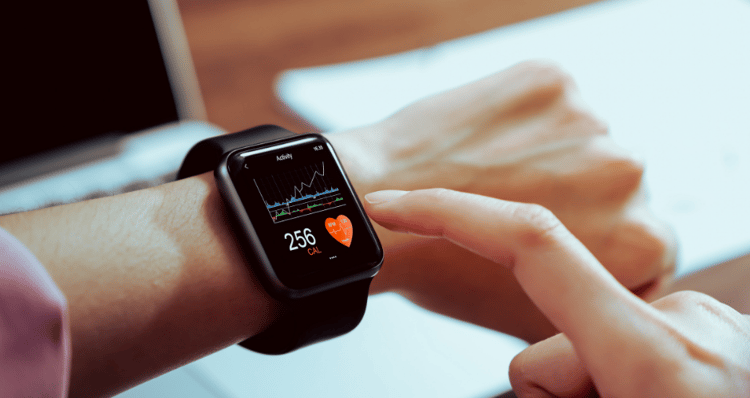Nowadays it is an undeniable fact that health technology is accompanying society on its path towards global digitization. In recent years, digital health solutions are being developed exponentially. In fact, it is only necessary to observe the data and predictions of the US market in digital health systems and products, especially those related to applications for mobile devices or tablets.
Among these digital health solutions are digital therapeutic platforms or DTx, which are used for clinicians or patients with medical or therapeutic purposes, such as rehabilitation.
Regard to this phenomenon and taking it into account the high impact of how digital solutions can affect to health and wellness of people, it's important to create a social responsibility from the manufacturers , the sanitary authorities, and also from the medical centers that use the products, to ensure and promote that all the tools (even digitals) comply with the regulatory laws that apply to them.
Complying with the regulations not only guarantees being able to commercialize and use your product legally, it´s guarantees you that your product is secure, effective and works as intended.
So, are Digital Platforms or Medical Apps regulated?
The answer is absolutely yes. These types of solutions are part of the medical products group, and they must follow the European legislation (Regulation EU 2017/745 of parliament and council) and national (Royal Decree 1591/2009 which regulates medical devices) to guarantee security and legality in its use. In fact, legislation defines medical products, among other aspects, as all devices (specifying that includes a computer program) with the purposes of diagnosis, prevention, tracing, prediction, compensation, treatment or relief of any disease or disability.
Therefore, a digital solution or health app ( device, computer program) that aims to trace or offer a tool for a rehabilitation process (tracing or treatment purposes for an illness or disability) is a medical product.
What kind of guarantees do regulated digital health apps provide?
Starting with the premise that using a medical product that does not comply with the regulation can have penal consequences not only for those who put into the market the product but also for the professionals that use it. The benefits can resume in security and it works as intended.
In first place, complying with these ensures and maximizes the safety of the product on the patient and on the user who uses it in various aspects.
It involves going through a verification and validation process, as well as a clinic evaluation in which data was recorded about safe use and actions that the tools have in case of any risk. In second place, complying evidence that demonstrates that the product works as intended and contributes to the patient's wellness. Because of these, it's important to acquire or use a health application, we can ensure it applies to the current legislation.
How can I know if a digital rehabilitation app complies with the legislation?
By law, the first responsible to ensure that the product applies the regulations is the manufacturer. To do that, after an evaluation process, it would put on the “CE mark” (Conformité Européene) in the product. This information normally can be found in the section “about, product information, help…” of the digital health solution or application, where it would also be associated with the manufacturing data.
CE marking inside the ReHub platform.
Click on “Help”, and next "about me".
Apart from that, it is necessary to ensure the manufacture is registered in the European database EUDAMED, in case of being a Spanish manufacturer it is required to have a prior operating license provided by the Spanish Agency for Medicines and Health Products (AEMPS). It's important to contrast all this data, because a phrase as “we accomplish CE mark” it's not evidence of this action.
I have a smartwatch that counts my heart rate and steps. What happens in these cases?
These products are considerate wellness or fit, although a lot can measure steps, burned calories, cardiac pulse, stress level and do a following on the progress, it's not destined to medical uses like we described previously.

This means the manufacturer is exempted from any guarantee or responsibilities on health consequences, because there is no evidence that they are fit for effective medical use or that they are safe or that it can correctly interpret the information, so indirectly can create a health problem.
For these reasons, the use of an app with these properties with medical purpose ( as well as any type of rehabilitation) on a patient, in a legal breach.
What if the digital platform I acquire is not CE marked?
Current legislation considers a number of infringements and penalties relating not only to the placing on the market, but also to the use of medical devices that do not comply with its implementing regulations. Healthcare professionals must ensure that medical applications are used in compliance with the regulations or that they are used in accordance with the intended purpose indicated by the manufacturer. For example, an App intended for wellness and/or fitness cannot be used for rehabilitation.
The European Commission assigns the management of fines to the member states. In Spain, penalties are regulated at the state level by the General Health Law 14/1986, by Law 29/2006. In other words, if you acquire a digital solution for medical purposes and it does not have accreditation of compliance with its community and state regulations (Declaration of Conformity, AEMPS license...), the fines and penalties will not only be for the manufacturer of the solution, but could also be for the healthcare professional who uses the product.
It is therefore very important as a purchaser of a medical technology to consider whether the supplier has the CE marking for medical devices.
-1.png?width=700&height=350&name=Dise%C3%B1o%20sin%20t%C3%ADtulo%20(6)-1.png)
.png?width=1092&height=497&name=RehubbyDycare_cobalto%20(4).png)
.png?width=431&name=Marcado%20CE%20ReHub%20(850%C2%A0%C3%97%C2%A0500%C2%A0px).png)